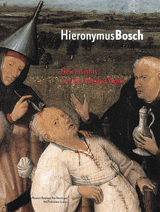
Renson 2001
“Genealogical Information Concerning The Bronchorst-Bosschuysen Triptych” (Marianne Renson) 2001
[in: Jos Koldeweij, Bernard Vermet and Barbera van Kooij (eds.), Hieronymus Bosch. New Insights Into His Life and Work. Museum Boijmans Van Beuningen-NAi Publishers-Ludion, Rotterdam, 2001, pp. 92-95]
On 14th April 1567 an inventory of the property of Jan van Casembroot, secretary of Count Lamoraal of Egmont, was drawn up. Casembroot had been arrested a week prior to this by the Duke of Alva and his belongings were confiscated. In this inventory there is mention of an Adoration of the Magi triptych painted by Jeronimus bossche, showing the insignias of Bronchorst and Bosschuysen on the exterior of the wings. The insignias that are painted on the interior of the wings of Bosch’s Adoration of the Magi triptych in the Prado are definitely not the insignias of the families Bronchorst and Bosschuysen, and so it is not this triptych that was mentioned in the 1567 inventory.
Archival research has shown that in 1560 Jan van Casembroot married to Willelmina Van Bronchorst-Rattenburg. She was the daughter of Andries van Bronchorst-Rattenburg and Wendelmoet van Bosschuysen. Before 1560 Willelmina had already been married twice: the first time in 1542 to Alexius van Nassau (who died in 1550 and was a natural son of Hendrik III van Nassau), the second time in 1554 to Jan van Lannoy (who died in 1557). Jan van Casembroot was beheaded in 1567.
Willelmina was born in 1526 and was the fifth child from the second marriage of Andries van Bronchorst (and Wendelmoet). By means of a rather vague way of reasoning the author concludes that the triptych from the 1567 inventory (which apparently was lost and had been commissioned by Andries and Wendelmoet) cannot have been painted before 1516 (the year in which Bosch died), so the triptych must have been an imitation or copy after Bosch.
[explicit]